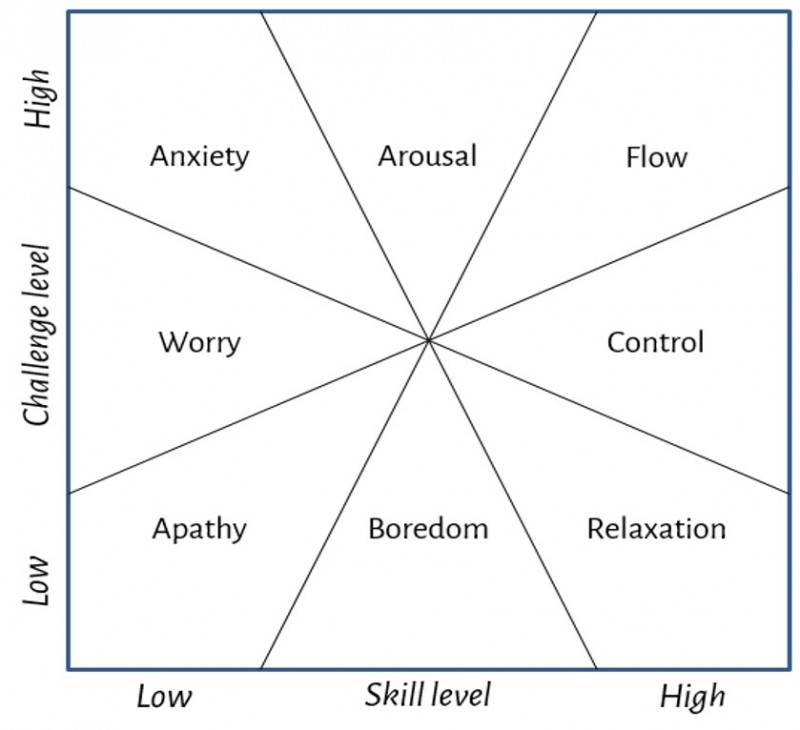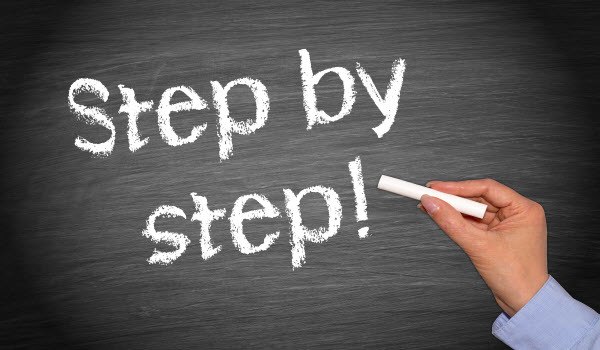How To Create Flow In eLearning
Here are a few things you need to know about the state of flow and the conditions that help create it.
The State Of Flow
According to Mihaly Csikszentmihalyi (a professor at the University of Chicago who has spent almost his entire career researching this phenomenon), a flow is a state of intense emotional involvement. He describes it as following:
Being completely involved in an activity for its own sake. The ego falls away. Time flies. Every action, movement, and thought follows inevitably from the previous one, like playing jazz. Your whole being is involved, and you're using your skills to the utmost.
Flow = Games?
This state is the Holy Grail of game designers and well-known by all gamers. But it shouldn't be associated with games only. We enter into the state of flow during many activities (writing a blog post, speaking, painting a wall, etc.). It is a very personal state of mind, so it is hard to predict which tasks will lead somebody to the state of flow and which will not.
Of course - many of them (like games) have a bigger power over it than the others. But games seem not to be the only way of building flow in your eLearning course.
- My thought? Be open for looking for flow outside of the games box.
Conditions Of Flow
The biggest chance to find the state of flow in eLearning is where the challenge level is as high as (or even a little bit higher than) the skill level of an eLearner. According to Mihaly Csikszentmihalyi:
A flow experience has got to be challenging. Anything that is not up to par is going to be irritating or ignored.
We can overwhelm and scare an eLearner with a high complexity task requiring much bigger skills, or we can bore him/her to death by assigning a task which is way too easy. From my experience, the latter scenario is more frequent - eLearning designers used to seek “the least common denominator” building courses for people of the lowest skills. No wonder that the majority of their users are not engaged in this experience at all.
- My thought? Think about skills and competencies of the whole target group. Do not level down - provide, instead, some additional materials/paths for those who require supplementing basic skills.
Flow Channel
If you are a gamer, you have definitely experienced the flow channel. This technique lets you improve your skills while coping with more and more demanding challenges. At the very beginning you are challenged with easy tasks. Their complexity grows in time and, eventually, you are skillful enough to “fight with the boss” (to manage the most advanced challenge).
The responsibility of an Instructional Designer is to create an eLearning course with an ability to keep the eLearner in the flow channel. It should be easy for a less skilled learner; it should be more demanding for a more skilled learner.
- My thought? Give learners various paths of development. Do not force skillful learners to consume the easy part of the eLearning course. Do not challenge less skillful with hard tasks. Give learners a sense of true satisfaction after completing every challenge in your eLearning course.
Choices And The State Of Flow
Talking about the various paths of development and choices, I will quote once again an opinion of Mihaly Csikszentmihalyi about flow in designing websites:
A Web site that promotes flow is like a gourmet meal. You start off with the appetizers, move on to the salads and entrées, and build toward dessert. Unfortunately, most sites are built like a cafeteria. You pick whatever you want. That sounds good at first, but soon it doesn't matter what you choose to do. Everything is bland and the same. Web site designers assume that the visitor already knows what to choose. That's not true. People enter Web sites hoping to be led somewhere, hoping for a payoff.
During designing eLearning courses we sometimes consider choices as cafeterias. No wonder that it is hard to build flow on this model - even the best design of flow will collapse if we will not lead eLearners through it. We have to show them the path; we have to give clear directions how to enter and stay in the flow channel.
- My thought? Give eLearners a sense of having choices, but limit them to keep them in the flow channel. Build a strong context for the flow channel (a story, an environment/world of a game, strong, leading metaphors, etc.).
Goals And The State Of Flow
A goal is another condition of building flow. Such a goal should be not only communicated to an eLearner, but also accepted by him/her. A big, general goal should be also decomposed into smaller ones. These should become the subject of challenges provided during the eLearning course. It is also very important to conclude every single challenge with meaningful feedback.
- My thought? Communicate goals (both general ones and goals of challenges). Be sure that eLearners internalize them. Provide growing pace/complexity of goals and challenges. Remember feedback.
Multisensory Experience And The State Of Flow
It seems that it is easier to build the state of flow in eLearning if we provide learners with multisensory experience. Of course - you can reach this state while reading a great book. Two hours will pass much faster, however, when you are watching a movie that you consider to be excellent. Being a part of an experience offers even bigger chances to reach flow (e.g. diving, visiting a museum, or visiting interesting places). Such activities will bring flow on condition that they are 'yours' - that we do what we love. Here is the last quote of Mihaly Csikszentmihalyi about this issue:
I found that if a painter relates to objects only through vision, his work is much less original than a painter who walks up to the object, smells it, throws it in the air, and manipulates it. The variety of sensory inputs allows you to create a visual image that has all kinds of dimensions bubbling up inside it.
- My thought? Draw eLearners from the computer. Give them additional challenges in real life/ their workplace. Stimulate other senses of eLearners - let them not only see and click, but also hear, smell, act, and interact with others.
The post was written in the state of flow inspired by an interview with Mihaly Csikszentmihalyi published in Wired Magazine. The whole interview is available here.











